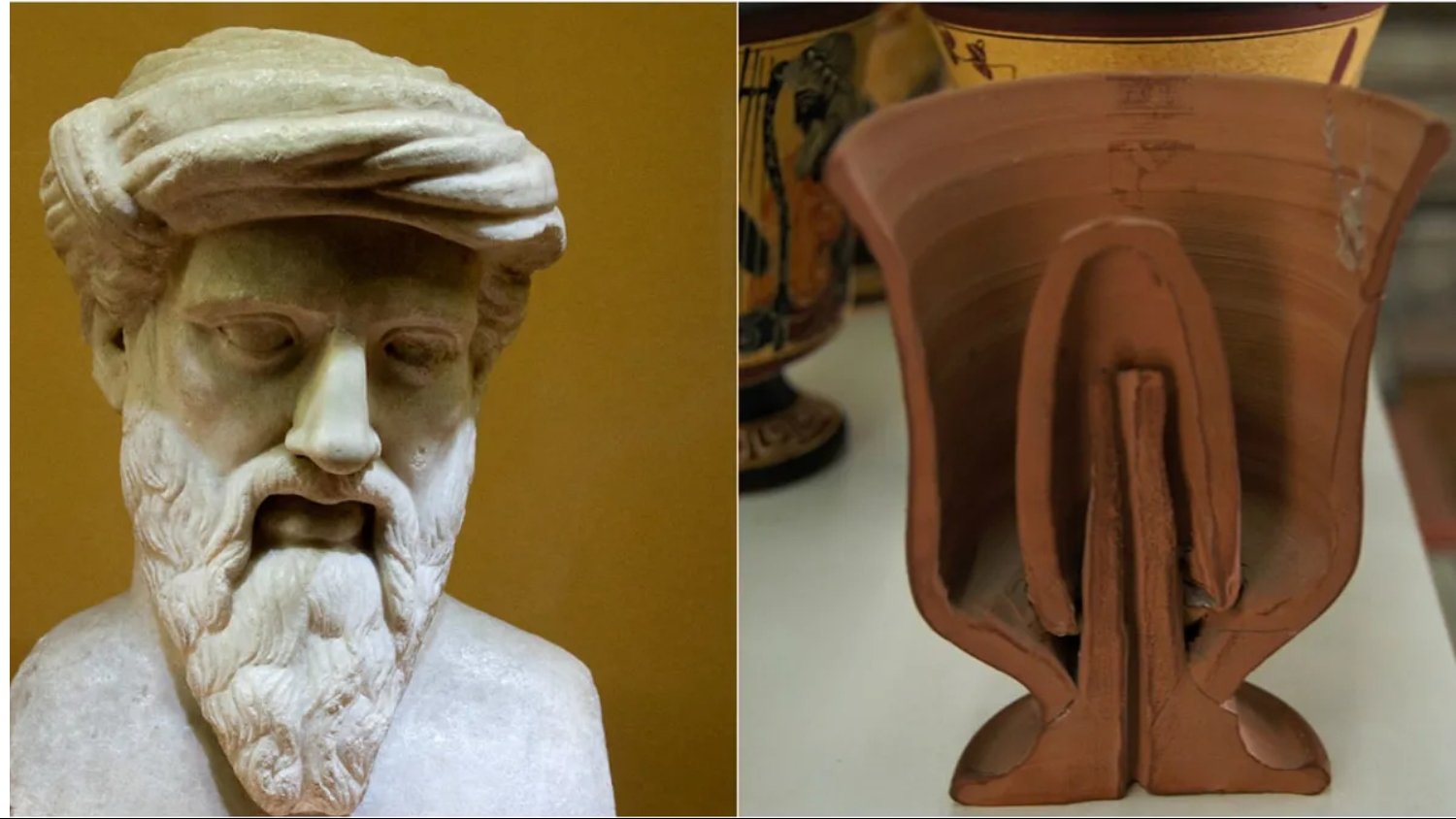Laughing with Pythagoras: The History and Science Behind the Pythagorean 'Greedy' Cup, The Ingenious Prank of Ancient Greece, A Lesson in Physics and Moderation
It's no secret that human beings have always enjoyed a good laugh, and this trait extends far back into our history. Take the Pythagorean "Greedy" Cup, for example. It's a prime instance of the fact that even the ancients appreciated a practical joke. Named after the Greek mathematician and philosopher Pythagoras, who was known for his work in geometry, the Pythagorean Cup is a fascinating blend of humor, creativity, and physics.
Pythagoras: More Than Just a Cup's Inventor
Although most famously known for the Pythagorean Theorem in geometry, Pythagoras of Samos (circa 570–495 B.C.) was far more than just a mathematician. He was also a philosopher and a mystic, whose influence stretched across various fields of study. Founding a philosophical and religious school in Croton (now Crotone, in southern Italy), Pythagoras and his followers, known as Pythagoreans, followed a way of life committed to studying mathematics, music, and the natural sciences as paths to spiritual refinement. His teachings and philosophies formed the cornerstone of the group's beliefs and practices, including a belief in the transmigration of souls, or reincarnation. The school made significant contributions to science, mathematics, and politics. In fact, the Pythagorean theorem, which states that in a right-angled triangle, the square of the hypotenuse's length is the sum of the squares of the other two sides' lengths, is a cornerstone of modern geometry. Despite the many centuries since his lifetime, Pythagoras' influence still resonates in many areas of contemporary academic discourse and everyday life.
The Pythagorean Cup: An Overview
Also known as a Pythagorean Greedy Cup or a Tantalus Cup, the Pythagorean Cup is a device ingeniously designed to enforce moderation. It is a drinking cup that allows the user to fill it up to a certain level. However, if one gets too greedy and fills the cup beyond this point, all of the liquid inside drains out through the bottom. The principle behind it A simple yet effective implementation of fluid dynamics
The Design
At first glance, the Pythagorean Cup looks like any ordinary drinking vessel. The secret lies in its central column, which is an open-ended pipe running from the bottom of the cup to its rim. This column, a siphon tube, is hidden in the middle of the cup and is the key component that controls the flow of liquid.
If the liquid level remains below the top of the central column, the cup functions like any other; you can drink from it without any issue. However, if the liquid level rises above the top of the column, a siphon effect is created. Gravity pulls the liquid down the siphon tube, and due to the cohesive forces of the liquid, all of it is emptied out through the bottom of the cup, resulting in an unexpected surprise for the user.
The Science Behind It
The physics underlying the operation of the Pythagorean Cup is straightforward and elegant. It's based on the principle of communicating vessels, a theory in fluid dynamics that states that fluid in interconnected containers (vessels) will equalize to the same level. The Pythagorean Cup is essentially a set of communicating vessels.
Once the liquid fills the siphon tube, the weight of the liquid in the tube will be enough to overcome the liquid's surface tension. This creates a negative pressure at the top of the siphon tube, pulling the liquid from the cup into the tube and then out the bottom, emptying the cup completely.
The Humor and the Lesson
Historically, Pythagoras is said to have invented this cup to demonstrate the virtues of moderation to his students. The moral of the story is clear: one must exercise restraint and not be greedy, or else they risk losing everything.
Interestingly, despite its origins in ancient Greece, the Pythagorean Cup has managed to maintain its relevance over millennia, surviving as a novel curiosity and an educational tool. It serves not only as a tangible demonstration of basic principles in fluid dynamics but also as an amusing way to prank unsuspecting friends and family.
In conclusion, the Pythagorean "Greedy" Cup is an ingenious invention from ancient times that beautifully combines science, philosophy, and humor. It provides a tactile reminder of the importance of moderation while also serving as an unforgettable practical joke. Whether you're a student of physics, a history buff, or just someone with a penchant for pranks, the Pythagorean Cup has something to offer. In a world where technology often distances us from the physical world and its principles, this ancient device provides a refreshing and entertaining connection to our scientific roots.








